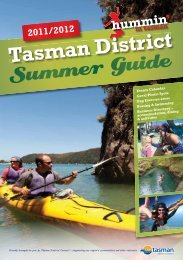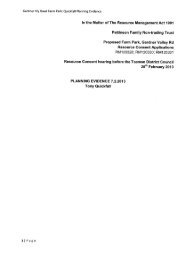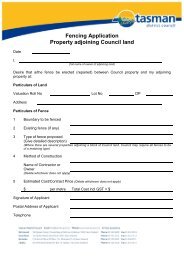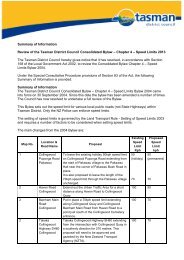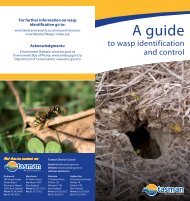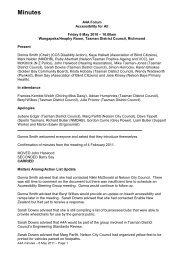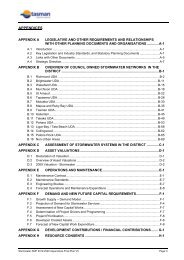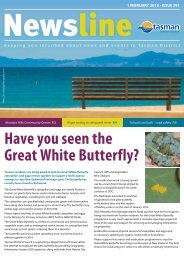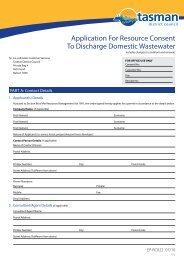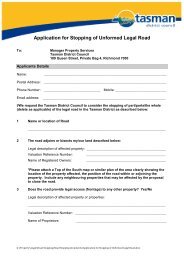Abel Tasman Foreshore Scenic Reserve Draft Management Plan
Abel Tasman Foreshore Scenic Reserve Draft Management Plan
Abel Tasman Foreshore Scenic Reserve Draft Management Plan
You also want an ePaper? Increase the reach of your titles
YUMPU automatically turns print PDFs into web optimized ePapers that Google loves.
2.2.1 Legislation<br />
The classification of <strong>Abel</strong> <strong>Tasman</strong> <strong>Foreshore</strong> <strong>Scenic</strong> <strong>Reserve</strong> as a scenic reserve under<br />
section 19(1)(a) of the <strong>Reserve</strong>s Act 1977 provides a high degree of protection to its<br />
indigenous plants and animals. The <strong>Reserve</strong>s Act 1977 states that:<br />
3(1)(b) ‘Ensuring, as far as possible, the survival of all indigenous species of flora<br />
and fauna, both rare and commonplace, in their natural communities and<br />
habitats…<br />
19(2)(a) ‘… the indigenous flora and fauna, ecological associations … shall as far as<br />
possible be preserved …’<br />
An authorisation (see section 8.4 ‘Other authorisations for non-commercial<br />
activities’) is required for customary use, except for fishing and seaweed harvesting<br />
(see section 2.2.2 ‘Fishing (including shellfish) and seaweed harvesting’).<br />
Conservation General Policies 2(g) and 4.1(e) (see Appendix 10) set out the criteria<br />
by which the customary use of traditional materials and indigenous species may be<br />
authorised.<br />
In addition, Conservation General Policy 4.4(h) (see Appendix 10) identifies that<br />
tangata whenua will be provided with access to the remains of dead marine protected<br />
species for customary use consistent with relevant legislation and agreed protocols.<br />
Given the reserve context, both the Administration Committee and tangata whenua,<br />
as kaitiaki/guardians, have a responsibility to ensure that indigenous plants and<br />
animals are preserved for future generations.<br />
2.2.2 Fishing (including shellfish) and seaweed harvesting<br />
Customary use of fish (including shellfish) and seaweed is permitted within the<br />
reserve under Conservation General Policy 2(g), 4.1(e), 4.1(f) and 4.4(h) (see<br />
Appendix 10), provided it is in accordance with the general authorisation (see<br />
Appendix 6) and relevant fisheries legislation. (See section 3.1.2 ‘Fishing and the<br />
taking of seaweed and driftwood’ for non-customary fishing and harvesting.)<br />
When the foreshore was classified as a scenic reserve, the right to take or kill<br />
indigenous fauna for commercial fishing purposes was retained as a condition of<br />
establishment of the reserve. A concession is required for commercial fishing or<br />
taking of seaweed. Any applications to undertake commercial customary takes of fish<br />
or seaweed should be declined, in accordance with section 8.3.4 ‘Coastal fishing’.<br />
2.2.3 Dead animals and plants<br />
If an animal of cultural significance to tangata whenua dies, or washes up dead, on<br />
the reserve; or a tree of cultural significance to tangata whenua falls onto the reserve,<br />
then the materials should be offered to tangata whenua for customary use. Regard<br />
needs to be given to Conservation General Policy 4.4(h) (see Appendix 10) as well as<br />
protocols developed with tangata whenua, particularly in relation to dead marine<br />
mammals.<br />
2. Treaty of Waitangi 17



